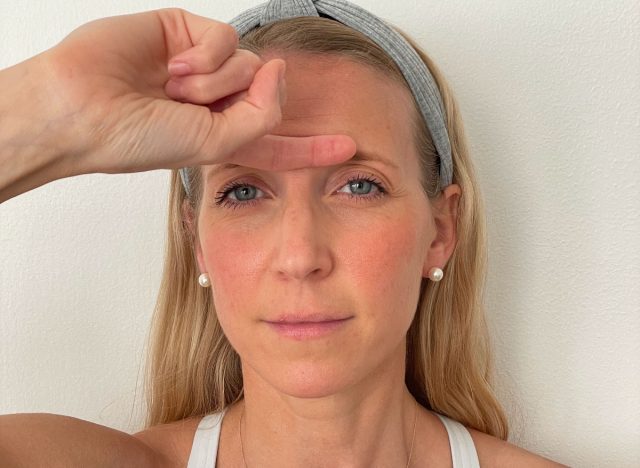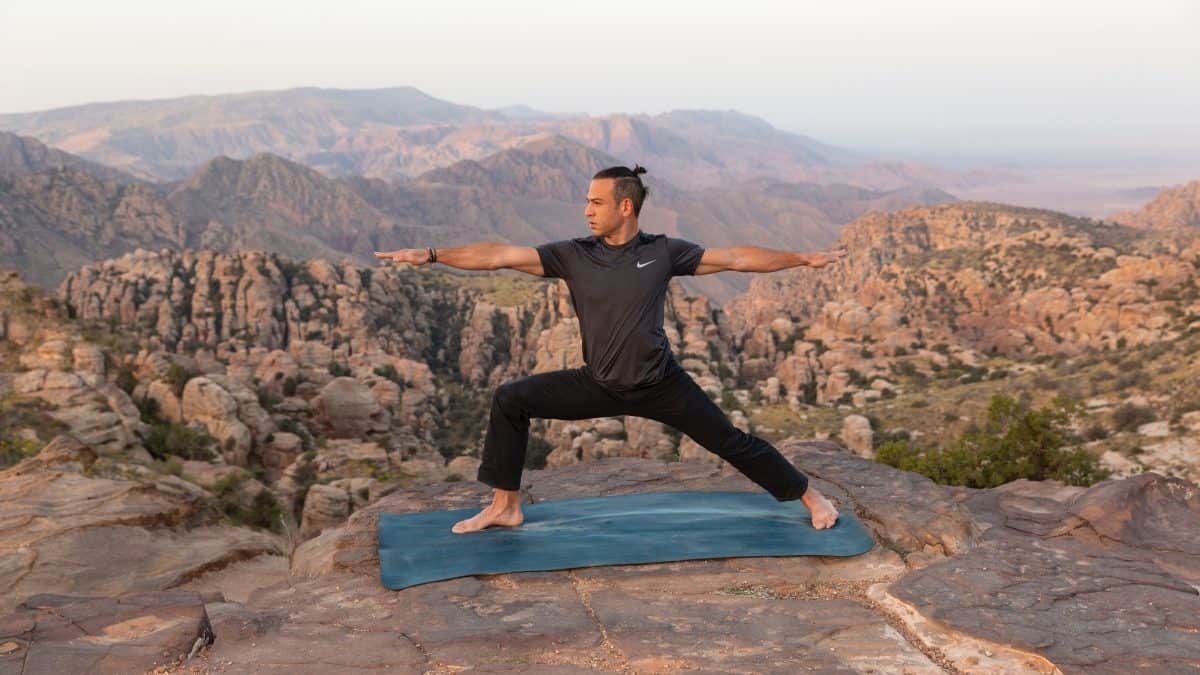
Yoga can cause musculoskeletal injuries in many people. Although wrist-weighted positions pose a high chance of injury, there is some way to reduce this risk. Incorrect wrist alignment can result in sprains and even breaks. During these exercises, the wrist and fingers should be spread evenly and firmly. Practice safe postures to avoid injury and follow the instructions.
Researchers report an increasing number of injuries in yoga. The number of injuries in yoga has increased from 13 in 2000 and twenty in 2001 to forty-six in 2002. However, the survey used by the Consumer Product Safety Commission relies on sampling and does not give the full picture. Only a few yoga injury victims make it to the emergency room. Most people seek treatment from their family physicians, chiropractors, and masseuses. It is important to be aware of the limitations and benefits of yoga for injury prevention.
Bad alignment can often lead to injuries in yoga. An injury can occur if your alignment is not correct. Yoga poses can be improved by practicing proper alignment. You should also ensure that your teacher is properly trained in biomechanics. For a class to be safe and effective, it is essential that you have the right body mechanics. If your instructor does not know the right technique, you're at risk of developing an injury.

The rotator cuff and the muscles of the shoulder are particularly vulnerable to injury, and the binds that link wrists and hands in a particular pose can also cause rotator cuff injuries. Sun salutations, which involve putting the body's upper extremity weight on the top, often result in impingement to the rotator. These positions can be particularly dangerous when you are doing a lot of forward bending and stretching your hamstrings.
Yoga can cause many injuries. Muscle and joint problems are the most common. They are usually not life-threatening and not likely to require medical attention. Yoga poses can be beneficial to your health if you have an existing condition. The rotator cuff and shoulder are very fragile muscles that can be damaged by overexertion. Therefore, you should pay special attention to your rotator cuff and make sure that it is functioning properly.
Although you should avoid dangerous poses like yoga, there are some injuries that can be caused by doing them. Text neck is the most common. It occurs when people are too dependent on their phones. It is possible to injure your neck muscles by avoiding certain positions. You'll reap the most from your practice the more you practice. Although injuries to yoga can be caused by many factors, most of them are avoidable.
Low back injuries are a common result of yoga. A low back injury could be caused by overly curving or twisting joints. People who have been injured in the past may be more susceptible to this condition if they do not align their bodies correctly. The shoulder injury is the most common in yoga. This can happen if the shoulder is overworked. The upper extremities may be affected by injuries to the clavicle or humerus as well as the scapula.

Incorrect technique is the most common cause of yoga injuries. Injury can result from overtraining the neck, hips, spine, and other joints. An orthopedist will advise you to listen to your body, and not take on too much. The neck can be straining if you do too much. It takes time to heal a neck strain. Avoid doing intense yoga. This will help prevent any further complications.
While the incidence of yoga-related injuries is low, it is important to know that certain postures can cause pain, which can be painful. These types of injuries rarely occur. These injuries can be caused by repetitive strain or overstretching. Injuries to yoga pose are most common when they're not performed correctly or without adequate warming up. If the practitioner isn't aware of the potential risks associated with the poses, it can lead to injuries.
FAQ
Which exercise is best for men
The answer depends on what you are looking for. If you want to lose weight, cardio workouts are great because they burn calories faster than strength training exercises.
If you want to just build muscle mass, strength training is better as it increases lean body weight.
Both types are good for improving your overall health.
I recommend HIIT, or sprint interval training, if you want fast results. This type of training can help you lose fat quickly and increase your metabolism. It increases your endurance so you can continue training even when tired.
Is it possible to drink alcohol while training?
Yes. Alcohol increases energy expenditure, speeds up recovery times, and reduces soreness.
Alcohol also increases insulin sensitivity, making it easier to absorb glucose.
However, alcohol can cause dehydration, which can slow down your metabolism. Alcohol can also lower testosterone production, which could lead to a decrease in muscle-building potential.
This is why women shouldn't have alcoholic drinks before exercising. Women who are heavily alcoholic should wait at minimum 24 hours before starting to work out.
Women who are nursing should avoid alcohol as much as possible.
Men should have no more than one drink per day.
How to Get Rid of Belly Fat Fast
There are several ways to reduce belly fat fast. One method is to eat less and drink lots of water.
A second way to boost your metabolism is by running and swimming.
Avoid sitting down if your goal is to lose belly fat quickly. Stand up often throughout the day. This will help you lose more calories.
If you've tried all the methods and are still struggling with belly fat, there's another option.
This requires a belt. The belt fits around your waist and is tightened when you sit down.
As a result you'll feel uncomfortable and will be more mobile. This makes it easier to lose weight and calories.
How often should I exercise each week?
It depends on how much time you have available and what type of exercise you prefer. A general guideline would be moderate-intensity aerobic exercise 3 - 5 days a week. Don't go overboard. To get the best results from your exercise, it is important to be consistent.
Which exercises are most effective for me?
It all depends on what type of fitness goals you have. Some people prefer endurance sports like swimming, cycling, or running. Some people enjoy lifting weights and using resistance bands. There are many types and styles of exercise available today. Select the one that best suits your needs.
Is it true that overeating protein causes kidney stones?
Protein helps to maintain healthy bones, tissue, and skin. Consuming too much protein can result is calcium excretion via urine. This can cause kidney stones.
It is important that you note that not all people develop kidney stones when they consume more than 2 grams of protein per kg (2.2 pounds). People can eat large amounts of protein and not get kidney stones.
Watching your sodium intake can help prevent kidney stones. Sodium helps regulate water balance in the kidneys. A high level of sodium can increase the risk of developing kidney stone.
You can also reduce your intake of proteins if you develop kidney stones. For most people, protein provides half their daily caloric requirements. If you cut back on protein, you'll likely lose weight.
If you do decide to eat more protein, don't go overboard. Try to eat less than 20% protein in total calories.
What is the purpose of milk for men?
Think about other uses for milk next time you purchase it. It may be a good idea to reduce your coffee intake.
It has been proven that milk is beneficial for both children and adults. Milk contains nutrients like vitamin D. Calcium, potassium, phosphorous, magnesium, and other essential nutrients.
It is also good for digestion and bone strength. People who consume dairy products have lower rates of illness and better immune systems.
The lactose in milk is also high, so people with digestive problems can enjoy the benefits of milk without experiencing stomach discomfort.
Drink more milk than soda and juice. The extra calcium and vitamin D found in milk can help strengthen your teeth and bones.
Plain low-fat yogurt is another option if milk tastes bland to you. Yogurt is an excellent alternative to milk because it is lower in calories, and contains more protein.
Yogurt also includes probiotics. These help in digestion and improve immunity.
Try warm milk to help you fall asleep. Warm milk helps relax muscles and boosts serotonin levels.
What is butter good for?
Butter is one source of saturated fats. This type of fat helps to build stronger bones, healthy skin, and hair.
Butter also contains vitaminK, which prevents bleeding after cuts and bruises. Vitamin K is combined with vitamin C to prevent bruises.
Butter also contains minerals like calcium, phosphorous and potassium. These minerals promote stronger bones, teeth, and teeth.
Butter has its drawbacks. Butter is high in cholesterol. A few studies have shown that too much cholesterol can increase the risk of developing coronary disease.
Butter also contains high amounts of saturated fat, which contributes to obesity and increases cholesterol.
However, if you must have butter, try spreading it on bread rather than dipping it into soup or salad. Bread absorbs more oil than potatoes or pasta.
Statistics
- An estimated calorie range for moderately active adult males falls between 2,200 to 2,800 calories per day, depending on age. (eatright.org)
- Are You One of the 20% of Guys (mh.co.za)
- 10 pounds in a month is likely during a lean bulking phase, especially for beginners. (muscleandstrength.com)
- According to the American Academy of Dermatology (AAD), men over 50 are at a heightened risk of developing it. (healthline.com)
- The PRS enabled risk stratification for overall prostate cancer and lethal disease with a four-fold difference between men in the highest and lowest quartiles (HR, 4.32; 95% confidence interval [CI], 3.16-5.89). (pubmed.ncbi.nlm.nih.gov)
External Links
How To
What should I eat before a workout?
For weight loss, you should eat fewer calories per day than you burn during exercise. You should also consume all nutrients.
These include protein, carbohydrates and fats as well as vitamins.
You can do this by eating smaller meals throughout your day instead of three large ones.
Working out if you are hungry can cause you to perform poorly.
Drinking water is a better option than energy drinks high in caffeine and sugar. This will keep your body hydrated and energized.
You should ensure that you get enough fluids. Too much water can dilute your electrolytes.
Your body needs electrolytes for proper functioning.
Sports drinks are an option if you don't have water. They are high in potassium, sodium, calcium, magnesium and other minerals.
This will replenish your electrolytes. These won't, however, replace the sweat you lose from exercising.
Multivitamins can help you avoid salt loss from exercise if you are worried.
These supplements contain additional vitamin B6, which can help regulate your body's sodium levels.
Supplements are not recommended if you don’t know the amount of salt in your food or beverages.
They are not regulated by Food and Drug Administration (FDA).
One example is that some sports drinks contain more sodium.
Some sports drinks could even contain artificial sweeteners. These additives could cause digestive issues.
You could use sea salt if you are concerned about taking too much salt.
It contains fewer chemicals that table salt.
Sea salt also lacks iodine. This mineral is important for healthy thyroid function.